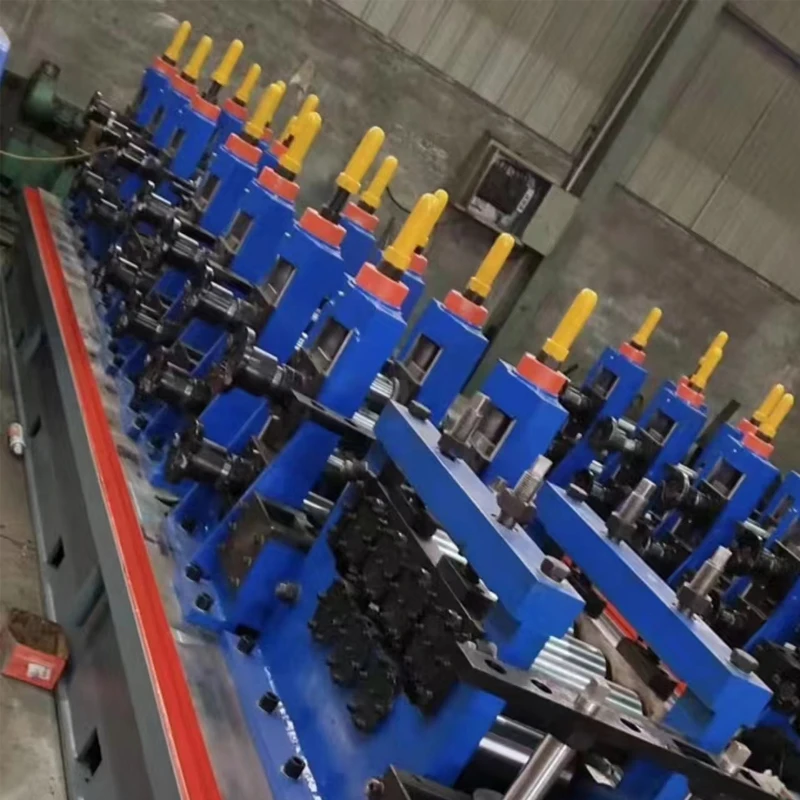Exploring the Efficiency and Innovation of Rolling Mill Machinery in Modern Industries
The Role of Rolling Mill Machines in Modern Manufacturing
Rolling mill machines play a crucial role in the manufacturing industry, particularly in the production of metal products. These machines are designed to process metal by passing it through a series of rollers, which reduces its thickness and increases its length. This article explores the various aspects of rolling mill machines, including their types, operational principle, applications, and the advancements made in this vital area of manufacturing.
Types of Rolling Mill Machines
There are several types of rolling mill machines, each tailored for specific tasks and materials. The most common types include
1. Hot Rolling Mills These mills operate at elevated temperatures, which helps to reduce the energy required to deform the metal. Hot rolling is typically used for materials like steel and aluminum to create structural components.
2. Cold Rolling Mills In contrast, cold rolling is performed at room temperature, resulting in improved surface finish and dimensional accuracy. Cold rolling is commonly used for producing sheets and strips of materials with greater strength and hardness.
3. Cluster Mills These mills feature multiple rolls to exert large pressures on the metal being processed. Cluster mills are often utilized for very thin gauges of metal.
4. Tandem Mills A tandem rolling mill consists of several stands arranged in a series, allowing for continuous processing of metal without the need to stop.
5. Planetary Mills These are specialized rolling mills where the rolls rotate around a central axis, providing uniform pressure and allowing for controlled deformation of the metal.
Operational Principle
rolling mill machine

The operation of a rolling mill machine involves transforming the raw material into a desired shape and size through mechanical deformation. The process begins with the feeding of metal billets or slabs into the mill, where they are heated in hot rolling or processed at ambient temperatures in cold rolling. As the metal passes through the rollers, it undergoes plastic deformation. The distance between the rollers can be adjusted to achieve the required thickness or gauge, while the speed of the rollers determines the production rate.
The pressure exerted by the rolls generates heat due to friction, which can further assist in softening the material. To maintain precision during the rolling process, modern rolling mills are equipped with advanced sensors and automated control systems that monitor parameters such as temperature, pressure, and thickness in real-time.
Applications of Rolling Mill Machines
Rolling mill machines are ubiquitous in various industries. They are employed in steel and aluminum production for manufacturing sheets, plates, bars, and structural shapes used in construction, automotive, and aerospace applications. Moreover, rolling systems are critical in producing components for energy sectors, such as pipelines and power generation equipment.
Additionally, the electronics industry benefits from rolling mills by utilizing thin sheets of metal for circuit boards and other components. The versatility of rolling mills allows manufacturers to create products that meet specific industry standards and customer requirements.
Advancements in Rolling Mill Technology
Recent advancements in rolling mill technology have transformed the way these machines operate. Automation and digitalization have enabled manufacturers to optimize production efficiency and reduce waste. The introduction of Industry 4.0 concepts has led to smart rolling mills that utilize artificial intelligence and machine learning algorithms for predictive maintenance and improved decision-making.
Furthermore, advancements in materials science have enabled the production of high-strength alloys that can withstand demanding applications, and rolling mills are being designed to accommodate these new materials. Eco-friendly practices, such as the recycling of scrap metal, have also become an integral part of the rolling mill operations, contributing to sustainability in manufacturing.
Conclusion
Rolling mill machines are an indispensable part of the manufacturing landscape. Their ability to process metals into various shapes and sizes makes them essential for industries ranging from construction to electronics. With ongoing advancements in technology and an increasing focus on sustainability, rolling mills are set to play an even larger role in shaping the future of manufacturing. As the industry evolves, these machines will continue to be pivotal in meeting the growing demand for high-quality metal products in a competitive marketplace.
-
High Frequency Straight Seam Welded Pipe Production Line-BzZhou Xinghua Machinery Equipment Manufacturing Co., LTD.|line pipe steel&welded gas pipeNewsJul.30,2025
-
High Frequency Straight Seam Welded Pipe Production Line-BzZhou Xinghua Machinery Equipment Manufacturing Co., LTD.|High Precision&Automated SolutionsNewsJul.30,2025
-
High Frequency Straight Seam Welded Pipe Production Line - BzZhou Xinghua Machinery Equipment Manufacturing Co., Ltd.NewsJul.30,2025
-
High Frequency Straight Seam Welded Pipe Production Line-BzZhou Xinghua Machinery Equipment Manufacturing Co., LTD.|Precision Welding, High EfficiencyNewsJul.30,2025
-
High Frequency Straight Seam Welded Pipe Production Line|BzZhou Xinghua|Precision Welding&EfficiencyNewsJul.30,2025
-
High Frequency Straight Seam Welded Pipe Production Line - BzZhou Xinghua|Precision Engineering&EfficiencyNewsJul.30,2025


